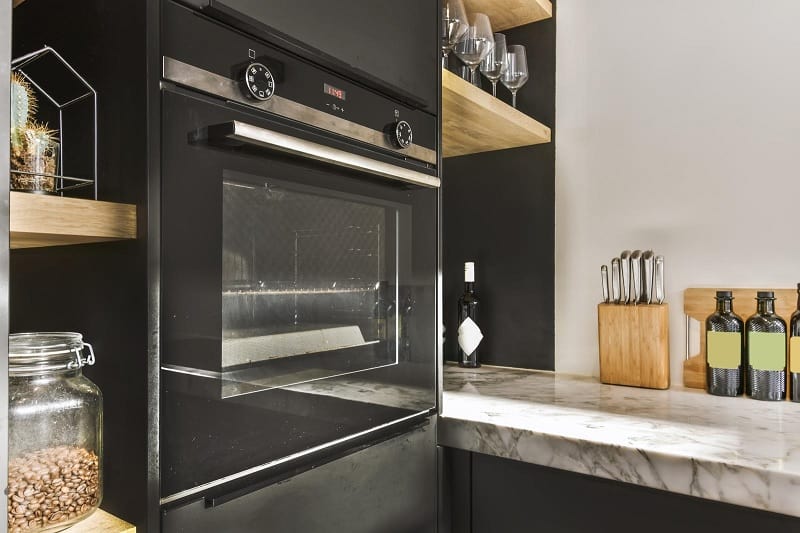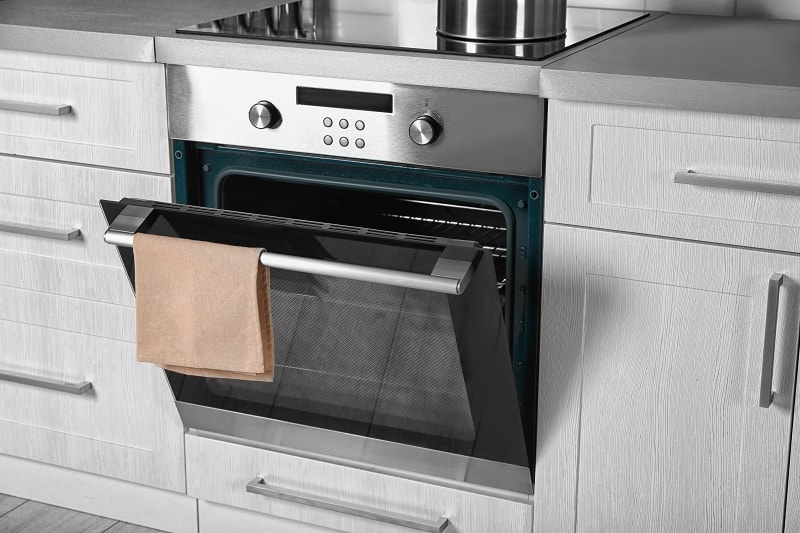There’s no doubt about it, cleaning the oven isn’t anyone’s favourite chore! It’s mucky, tedious, and a great way to throw your back out!
So, with that in mind, the idea of purchasing a self-cleaning oven can hold a lot of appeal.
But are they as wonderful as they may seem? And are they worth the extra cost?
How Does a Self-Cleaning Oven Work?
There are three main types of self-cleaning oven that work in different ways:
- Catalytic – These ovens have catalytic liners on the inside walls which absorb grease. When the oven is heated to over 200ºC, it will burn the grease away.
- Pyrolytic – Pyrolytic cleaning involves heating the oven to over 400ºC, which burns grease and cooking residues to ash. This self-cleaning type doesn’t require a special liner inside the oven. Instead, it refers to the method of heating the oven to a very high heat.
- Steam – With these ovens, you put a small amount of water in the bottom of the oven and then select the cleaning cycle. The water is evaporated and the steam cleans the sides of the oven. You will still need to wipe it down afterwards.
Once the cycle is complete and the interior of the oven has cooled, it will unlock itself and you’ll need to wipe out any soap or water residue.
The Pros of a Self-Cleaning Oven
The first and obvious benefit of a self-cleaning oven lies within its title: they clean themselves, meaning one less monotonous task to take up a precious Sunday morning.
Owning a self-cleaning oven when you’re a busy person can be a blessing, because if there’s one thing that we use regularly (and that gets grubby regularly), it’s our oven!
We’ve all had to endure the ultimate headache of scrubbing incinerated cheese that has caked itself to the inside of our oven, and it’s no bed of roses!
So, an oven that does it for you can be a great addition to your life.
The Cons of a Self-Cleaning Oven
Nothing is perfect, of course. Not even a self-cleaning oven! Factors to bear in mind when purchasing a self-cleaning oven are:
- Self-cleaning ovens can emanate unpleasant burning odours and fumes, and can pose a small risk of carbon monoxide emission.
- Because self-cleaning ovens depend on high heat to be effective, they pose a higher risk of fuse blowouts.
- Failing to remove any debris or oven parts can pose a fire risk.
- Using a self-cleaning cycle on a regular basis may wind up being costly, so it is advised to only use this feature when your oven is heavily soiled.

How Much Does a Self-Cleaning Oven Cost?
Prices vary when it comes to pyrolytic ovens. A ballpark cost is around the £900 mark, but some prices go as high as £1300.
There are self-cleaning ovens in the lower cost bracket, of course, with certain brands pricing their versions around the £500 mark.
Either way, it is likely you will be paying more for a self-cleaning oven than you would a regular electric cooker.
Are They Worth the Additional Cost?
The answer to this question really depends on how much you hate cleaning your oven!
Having a pyrolytic oven can be a blessing for busy households with multiple mouths to feed. However, they are not without their flaws.
They come with additional safety precautions, and while their insulation may mean they can be low(ish) in the utility bill department, the reality is they still require more energy (and high-heat energy at that) than a standard oven, so you may find your energy bills skyrocketing if you get a bit too “cycle-happy” with your self-cleaning oven.
It is down to the individual as to whether the additional cost of both purchasing and running a self-cleaning oven outweighs the convenience of having one less household chore to do. The choice is entirely yours!

Clara is a freelance writer and former chef. Though she may have hung up her apron, her love of food and cooking is still going strong! When she’s not whipping up a verbal storm, she’ll be in her kitchen sipping wine and whipping up a culinary storm.







